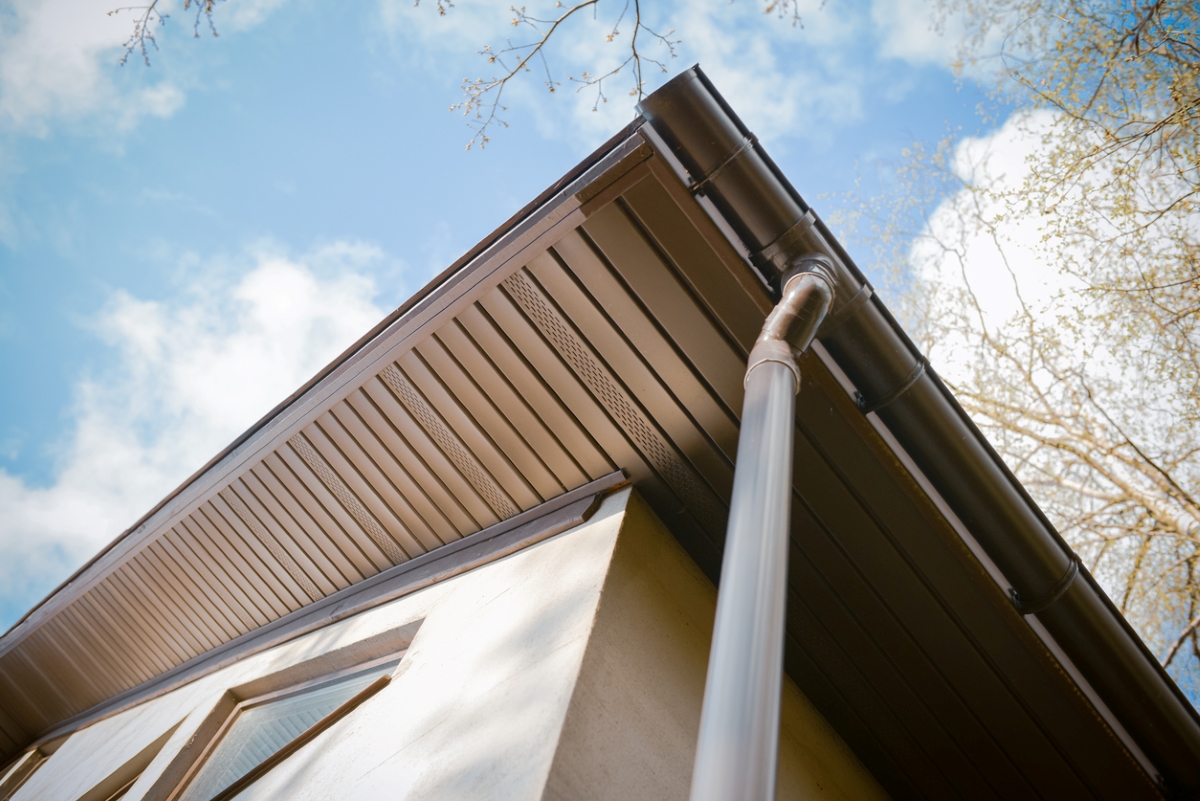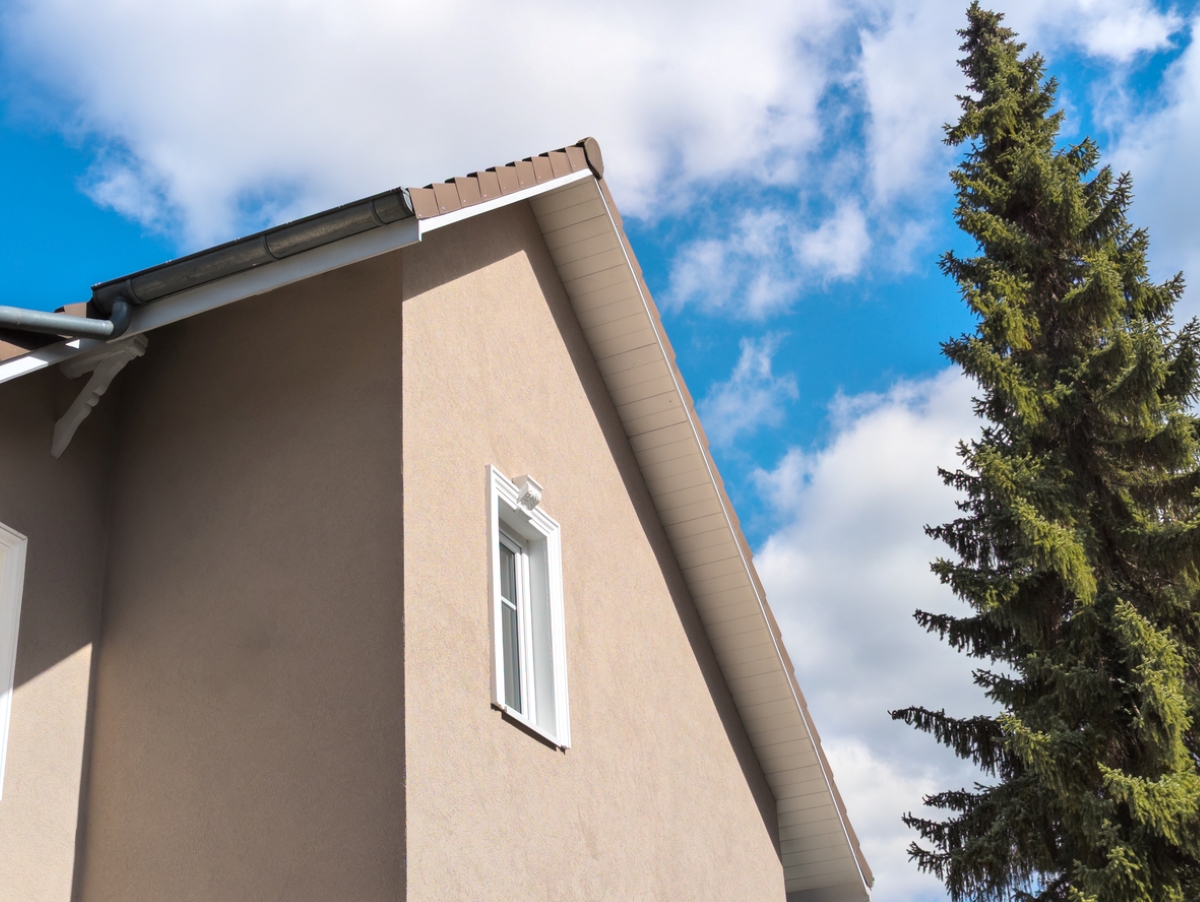We may earn revenue from the products available on this page and participate in affiliate programs. Learn More ›
Q: My partner and I are house hunting and we recently looked at a home that was listed as having open eaves. We didn’t notice anything unusual, so we’re not sure if we understand what that means. What are eaves on a house and what purpose do they serve?
A: Eaves are a common architectural feature of many homes’ roofs, but they come in various styles and are often confused with other roofing elements. A common part of traditional-style homes, eaves may be more narrow or nonexistent in contemporary homes that are designed for a more minimalist look. While they contribute to a home’s aesthetic, eaves on a house also serve a functional purpose.
Keep reading to find out more about eaves, their purpose, and different types that you might come across while house hunting.
Eaves are the portion of your roof that extends over your home’s walls.
The terms house eaves and roof eaves are used interchangeably, but both refer to the overhanging portion of a home’s roof. If the roof ends at the intersection of the building’s four walls, the building does not have any eaves. This is more common in commercial buildings or modern homes.
Eaves protect homes from extreme temperatures and moisture.
Eaves on a house are not only decorative. They also protect buildings from the elements, including rain, snow, and sunlight. Eaves on a roof provide shade, which helps regulate the temperatures in your home by protecting your windows from direct sunlight.
Niki O’Brien, operations manager of Custom Exteriors in Colorado, says eaves are also critical in protecting your home’s siding and foundation by directing water away from your home. “Without an eave and a gutter system, rainwater would drain off of your roof, directly down your siding and pool at your foundation,” she says. “This can cause mold, mildew, rot, and structural issues.”
Eaves are used on flat roofs, too, but a sloped roof assists in directing water to run off so it doesn’t sit and cause damage to the roof.
There are multiple types of house eaves.

While the function is the same, there are different types of eaves that you may see on different styles of homes. Sometimes homeowners will also have the option to add additional features to their existing eaves. Here are the most common types of house eaves:
- Box eave: An overhang enclosed with a box-looking soffit provides a clean look so the rafters can’t be seen. Box eaves are a popular choice for modern and contemporary homes.
- Open/exposed eave: An overhang with an unfinished underside allows the rafters to be visible. O’Brien says it’s rare now to see new homes with open eaves unless the home has a specific architectural style it’s aiming to achieve, such as a cabin, rural look.
- Closed eave: Similar to a box eave, this overhang is enclosed with a soffit underneath to hide rafters, but the soffit is a simple plank. Closed eaves are used in many homes and fit seamlessly into traditional and colonial architecture. “In modern homes, almost all eaves are closed,” O’Brien says.
- Decorative eave: There are different variations of decorative eaves, but common ones include eaves that curve upward or downward or eaves with decorative moldings or designs. This style is most often seen in historical buildings or grand homes.
- Wide eave: An oversized overhang that extends further than a typical eave. This style is commonly seen in homes located in hot climates to provide much-needed shade.
- Abbreviated eave: This overhang is much shorter than a typical eave and is commonly used in modern architectural styles.
Soffits and fascia serve different purposes but are often installed with eaves.
Eaves, fascia, and soffit are three distinctive elements of roofing systems but are often confused since they are installed near one another. Here’s how to identity each:
Eaves vs. soffits: Soffits cover the underside of eaves so the roof’s rafters aren’t visible, offering a more finished look. They cover the space in between the eave and the exterior wall. Soffits also can include vents to circulate air and regulate your home’s attic temperature and moisture levels.
Eaves vs. fascia: Fascia is a panel that attaches to the ends of the rafters on the front of the eave. It prevents pests from entering the rafters and is the surface used to mount gutters to your home.
Pests like to build nests in eaves but this can be avoided with regular maintenance.

Unfortunately, some pests like to make their homes in the eaves of a house. A roof overhang is an appealing spot for wasps, birds, and potentially bats to build a nest due to the eave’s covered protection. If your soffits have any holes, this can also lead to these pests making their way inside your attic and home.
You can avoid pests settling down in your roof eaves with these regular maintenance tasks:
- Repair any holes in your soffits as soon as you notice them.
- Install deterrents near your eaves, such as fake wasp nests or bird spikes.
- Use a hose or shop vac to remove spider webs, which can attract bats.
- Spray peppermint essential oil near your eaves since its scent is a natural deterrent to many insects and small animals.
If you still struggle with pests in your eaves, enlist the help of a pest control expert who can recommend alternative measures to keep the pests away.
Final Thoughts
Chances are, your home likely has some type of eave incorporated into its structure and design. However, some modern homes or older homes aren’t built with eaves. If your roof doesn’t have eaves, it’s important to take measures to protect your home from water runoff, according to O’Brien. “In a property like that, gutters are imperative,” she says.
If you’re concerned about open eaves, you may be able to add additional elements like soffits to protect the roof’s rafters. But if you like the look of open eaves, there’s no need to change the style. The best type of eave for your home is the one that protects your house from the elements and fits your personal style and taste.


